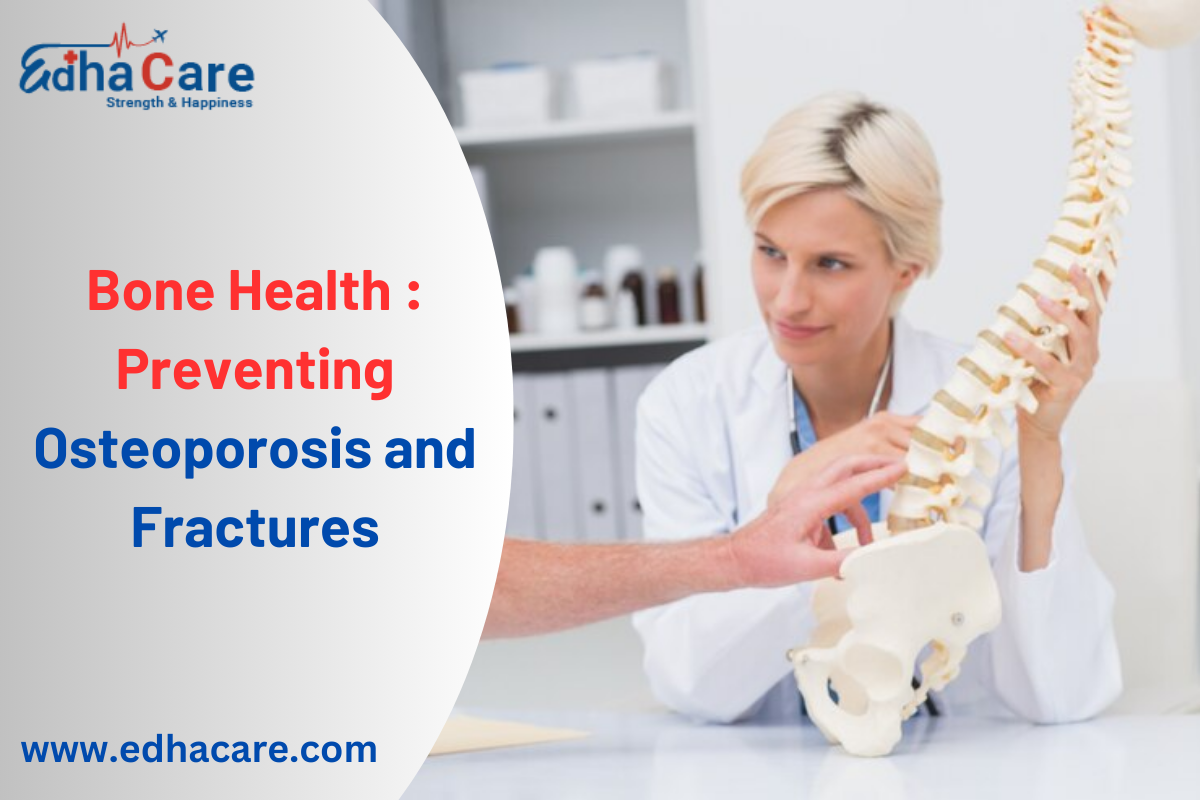According to projections, the global incidence of hip fractures in males is expected to rise by 310% and in women by 240% between 1990 and 2050. The burden of osteoporosis is rapidly increasing due to urbanization and aging populations. To “capture the fracture” and lower the risk of further fractures, most fragility fracture patients are not evaluated nor treated by their healthcare system.
More visits to the hospital are caused by osteoporosis than by diabetes, heart attacks, breast cancer, and other illnesses combined. Within a year after sustaining a spinal fracture, 1 in 5 women will experience another one. Following a hip fracture, 20% of patients will need long-term nursing care, and about 60 percent will need assistance a year later. Prostate cancer risk is up to 27 percent lower than fracture risk.
There is a low percentage of prompt diagnosis and treatment for osteoporosis. Diagnostic scans using DXA are not easily accessible in many nations, and/or treatment costs are not covered.
Men are also affected by osteoporosis! Not only is osteoporosis a condition that affects women, but males should also be aware of their risk factors.
Fractures and osteoporosis are prevalent. One in five men and one in three women older than 50 will sustain a fracture caused by fragility in their later years. Hip fractures are more common in men than prostate cancer and more common in women than breast cancer.
- One fractured bone can cause more. After a small fall, everyone with a broken bone should consult their physician. It is imperative to provide post-fracture treatment in order to stop more fractures!
- It’s crucial to prevent falls. Fall-related fractures account for 90% of all fractures. See your physician for a fall risk assessment if you have a history of falls or if you have already broken a bone in a fall.
Who is at Risk?

Discuss bone health with your physician if you have any risk factors.
During their next health checkup, all postmenopausal women and older men should initiate a conversation regarding bone health. Growing older is a significant risk factor for osteoporosis. However, there are a few other factors that can raise your risk even more.
People are vulnerable in terms of:
- sex and body size: post-menopausal women with small frames
- ethnicity: Asian and White women are most at danger.
- family background: If there are osteoporosis hormones in a parent: low levels of testosterone or oestrogen in the diet: inadequate protein consumption, severe dieting, or deficiencies in calcium and vitamin D
- a few medical problems, including HIV, rheumatoid arthritis, cancer, anorexia, endocrine and hormonal disorders, and disorders that impact nutritional absorption.
- long-term use of specific drugs, such as antidepressants, cancer treatments, proton pump inhibitors, and other lifestyle variables like alcoholism, sedentary behaviour, and smoking.
Steps to avoid fractures:
1. Make sure you’re getting enough calcium.: Dietary sources of calcium include:
- low fat dairy
- dark green leafy vegetables
- broccoli
- sardines
- salmon with bones
- foods fortified with calcium, such as bread, breakfast cereal, citrus beverages, tofu, and soy milk.
- Exercise regularly.
At every stage of life, fitness affects the density of bones and endurance.
- high impact exercises
- jogging
- aerobics classes
- dancing
- hiking
- low impact exercises
- fast walking
- low impact aerobics
- using an elliptical machine
- using a step-stair machine
- muscle strengthening
- weightlifting
- using elastic exercise bands
- using weight machines
- body weight exercises.
- Increase the amount of protein from lean sources you eat: Try to consume a lot of lean proteins for the best possible bone health. These options include:
- lean beef
- poultry
- low fat dairy
- fish
- legumes
- soy products
- eggs
- grains, nuts and seeds
4. Remember to get enough vitamin D: Vitamin D is absorbed by the body through diet and sunlight. Since vitamin D is found in very few foods, sunshine provides the body with 70–80% of the necessary amount.
Dietary sources of vitamin D include:
- milk and plant milk.
- cereal
- orange juice
- yogurt
- fatty fish
- egg yolks.
- cheese
- Mushrooms
- Limit your alcohol consumption.
Your body’s calcium balance is impacted by alcohol, which has an impact on the well-being of the bones you have. Additionally, drinking alcohol can hinder the production of vitamin D when exposed to sunlight. Hormone deficits brought on by heavy drinking may raise your risk of osteoporosis. Additionally, drinking increases the chance of fractures and falls.
- Maintain a healthy weight.
Osteoporosis is more common in those who are obese or overweight. Your risk of osteoporosis is associated with your body mass index (BMI), which is determined by taking your height and weight into account.
- If you smoke, Quit.
Smoking is a risk factor for osteoporosis. Studies have found a direct connection between tobacco use and the loss of bone density. Smoking may also increase your risk of fractures. Furthermore, it has been demonstrated to have a deleterious impact on fracture healing.
Is a Bone Density Test Required?

A bone density test can determine your risk of developing osteoporosis by measuring the strength of one or more tiny bones. The term dual-energy X-ray absorptiometry, or DEXA scan, refers to the most popular type. It measures your bone density by exposing you to a tiny amount of radiation. But not everyone is a good fit for the scan. According to the U.S. Preventive Services Task Force, the following individuals ought to have DXA scans for bone density:
- women 65 years of age and older
- younger women whose risk of fracture exceeds the standard for their age.
Bone Density Test Types
Bone density is measured by two different kinds of equipment. The hip, spine, and entire body are tested by central machinery. They are useful for various bone health tests that physicians can do.
The spine, hips, or entire body can be measured using dual-energy X-ray absorptiometry, or DXA. For determining bone density, doctors believe that this test is the most accurate and helpful.
Although it can test other areas as well, quantitative computed tomography (QCT) often measures the spine. Due to its high cost and radiation exposure, this test is not performed frequently.
Peripheral machines examine the heel, shinbone, kneecap, finger, and wrist. When DXA scans are unavailable, these devices offer a good substitute. Still, the best option for screening is a DXA scan. Tests used for peripheral screening.
A particular kind of peripheral screening test is called peripheral dual-energy X-ray absorptiometry, or PDA, which measures the heel or wrist. Sound waves are used in quantitative ultrasonography, or QUS, to quantify density, commonly at the heel. The wrist is measured with pQCT, or peripheral quantitative computed tomography.
In conclusion, Osteoporosis is a “silent” illness with no noticeable symptoms. Perhaps until you fracture a bone, you won’t realize you have it. Early action can reduce or eliminate the likelihood that this will occur.
Book Your Health Appointment With Our Experts – Click To Book Appointment

